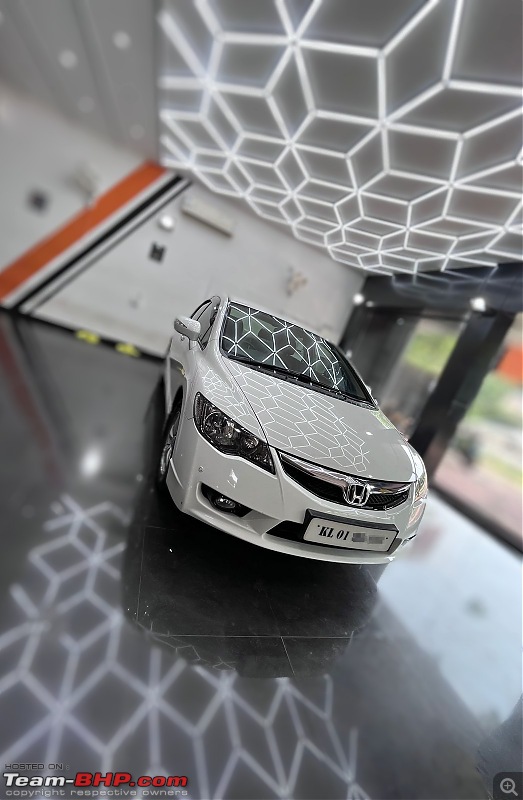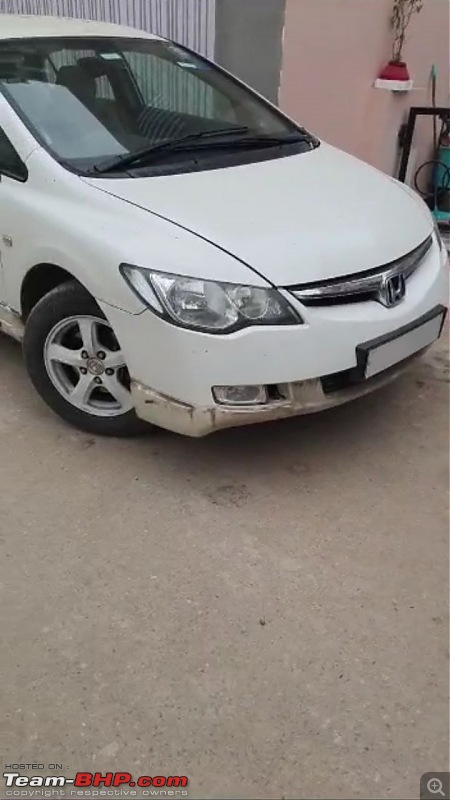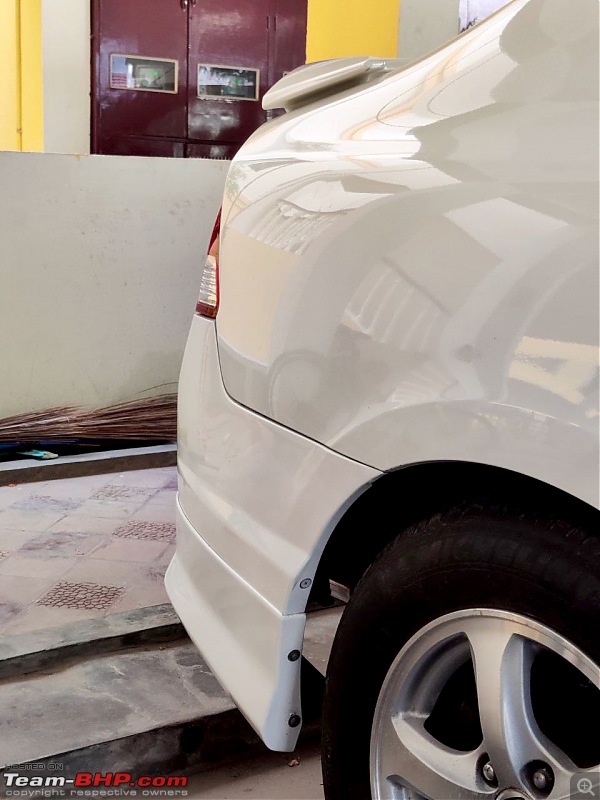Quote:
Originally Posted by sunilch  Any info or guidance is much appreciated. |
Based on the information imbibed from this thread and on the experience I have with my car over the 3 years, I'll list down some points which would be beneficial for you in the selection process.
1. Pop the hood. Check whether the hood insulator is present and free from damage. The engine bay should be as dry as a bone and void of rusts(Flood affected vehicle). No shiny lacquer treatment or freshly wet surface should be there. Only then you'd be able to identify any leak/stain of the fluids present
2. Inspect whether the fluids(engine oil/clutch/brake/coolant/PSF/wiper) are at the optimum mark(between Max and Min)
3. Carefully examine the surrounding of the Power Steering Fluid(PSF) reservoir. Should be devoid of any spillage. Civics' are known for leakages in the pump, rack and hoses. Again, depends on the driving style, nature of terrain and ageing of rubber
4. Hydraulic engine mount. Clearance of 6mm - 12mm should be there. Refer old posts
5. Battery. Check the health indicator on it. Should be green in color. Don't forget to ask the warranty card for it
6. Open the fuse box. Inspect the area for any carbon deposits and make sure that the fuse puller is present in the cover. Hunt for exposed wiring(aftermarket horns/lights/relays) and aftermarket filter/ plumbing if any.
7. If possible, check the condition of the air filter and ascertain if it's OEM or not
8. The original key has built-in lock & unlock buttons. The Honda logo will have a golden accent. Observing the instrument cluster, insert the key into cylinder and turn to ACC position. You'll be greeted by a bunch of warning lights. After 40 seconds, all must go OFF except the battery indicator & the low oil-pressure indicator
9. Crank the engine. Now, all warning lights must vanish. I have seen problematic Civics with CEL and airbag icon staying lit! Do note that initially, tachometer would hover at 1000 RPM and should settle to 800 RPM at idle
10. Felt any vibration on the seats during cranking? Switch on A/C. Feeling vibes on the seats? Gently raise the throttle while on Neutral. The vibes would go away. Again, points to weak engine mounts
11. Gently, quarter-turn the steering wheel to the left and right. RPM would fluctuate. Don't mind. Pay heed to any abnormal noise. Excessive whining noise points to air in PS pump system. Mild clicking noise may signal the problem in the steering rack
12. Find the manufacturing year of the tires. Should be less than 2 years old. Set all the tires to 30PSI. Go on a long drive. Ensure that the coolant temperature level remains constant throughout and the fuel gauge is working properly. Have seen Civics' with inverted fuel gauges!
13. Set the A/C temperature of your choice. Should blow cold air during the entire drive. Civics' are known for evaporator leakage/failure since Honda removed the cabin filter for India
14. Hit some upper echelon triple digit speeds. Only then you could observe the suspension behavior. Weak dampers lead to uncontrollable bouncy ride. Progressively increase the pedal pressure of the brakes to detect vibrations on the steering wheel / brake judder. Points to scored brake disc and pad
15. Failed wheel bearings lead to howling/growling/helicopter noise during the drive. Vary your speeds to detect any abnormal noise. Also, watch out for eccentric steering left/right pull. Cars poorly reworked after accident, exhibit this behavior
16. Tread the car gently over bad roads. Be in all ears for any noise
17. Is a there a lag to accelerate when applying throttle? Worn-out spark plugs may be the culprit. Also, Fuel filter should have been replaced every 40k KMS.
18. Finished the Drive? Do not turn-off the car but let it idle. Check the wiper mist function. It should effectively spray the liquid else we could write off that the hoses are chewed up by rats! Every Civic owner must have faced this

19. Recline the seat and observe the roof liner and A-pillar edges for stains(Water ingress)
20. Turn ON the heater. The vents should blow warm air. Means that the cooling circuit of the car is fine. Usually, un-skilled mechanics bypass the heater core to troubleshoot engine overheat scenarios. Also, check whether all the A/C vents have tabs to divert the air-flow
21. An official recall by Honda for all Civics sold in India to have either the passenger/driver airbag replaced or both in 2015-16. Check service history.
22. Arm rest latch tends to break over time. Check for play as well. It rattles when fit loose
23. Now, the exterior. All the door and windshield weather-strips are bound to wear some day. Be prepared
24. Civic is a low-slung sedan and is bound to get hits. Watch out for dents on the rocker panel
25. Check the service history with the maintenance schedule. Now, take the car to the Honda ASC and report all your findings. Insist them to perform HDS(Honda Diagnostic Services) to find out error codes if any
26. Specifically, instruct them to dislodge the dampers from the strut assembly. Only then, could the condition of strut bearings, strut mounts and bump stops be diagnosed.
27. Inform them to perform a vacuum test on A/C, evaluate the condition of the drive belt and then all their usual stuff
They'll provide you with the recommendations list as you posted above. From there, you could take it further.
Since I own a manual transmission one, I can't provide any pointers about the AT power train.
Happy Hunting!

 (37)
Thanks
(37)
Thanks
 (1)
Thanks
(1)
Thanks
 (2)
Thanks
(2)
Thanks
 (2)
Thanks
(2)
Thanks
 (1)
Thanks
(1)
Thanks
 (7)
Thanks
(7)
Thanks
 (20)
Thanks
(20)
Thanks
 (48)
Thanks
(48)
Thanks
 (1)
Thanks
(1)
Thanks
 (1)
Thanks
(1)
Thanks
 (1)
Thanks
(1)
Thanks
 (2)
Thanks
(2)
Thanks




























 This car is epic!! I can't remember the last time i saw a clean civic and this post has just quenched that thirst, great going and many more happy miles!
This car is epic!! I can't remember the last time i saw a clean civic and this post has just quenched that thirst, great going and many more happy miles!